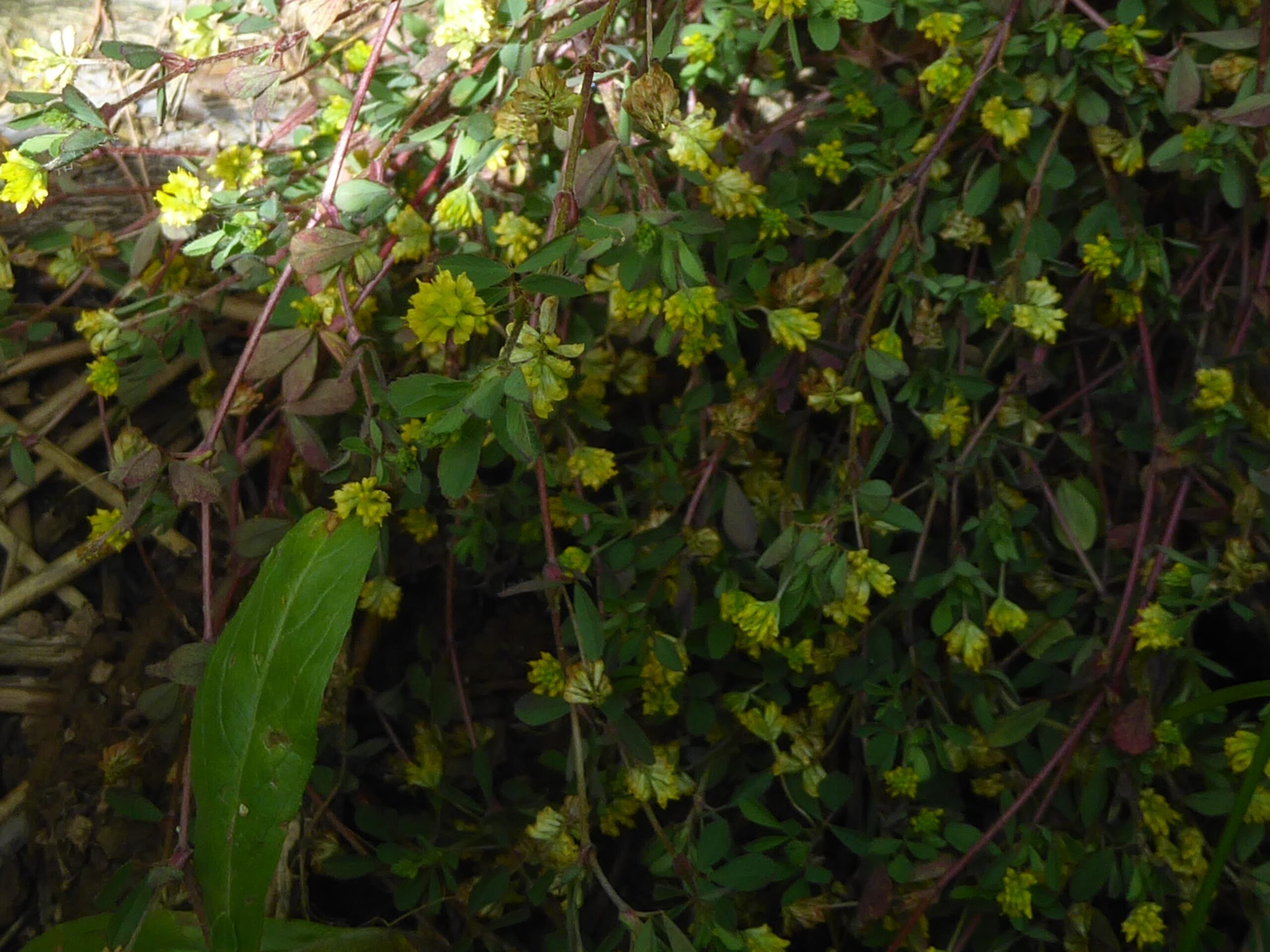I hadn’t noticed this flower before – it must have just bloomed. It is like a yellow clover flower rambling across the bank with red slightly-winding stems and tear-drop-shaped leaves in threes. Hence, trifolium. It likes grassland and wasteland and is in the pea and clover family. It is sometimes grown as a crop for animal forage and to encourage bees.
-
Ragwort (Jacobaea vulgaris)
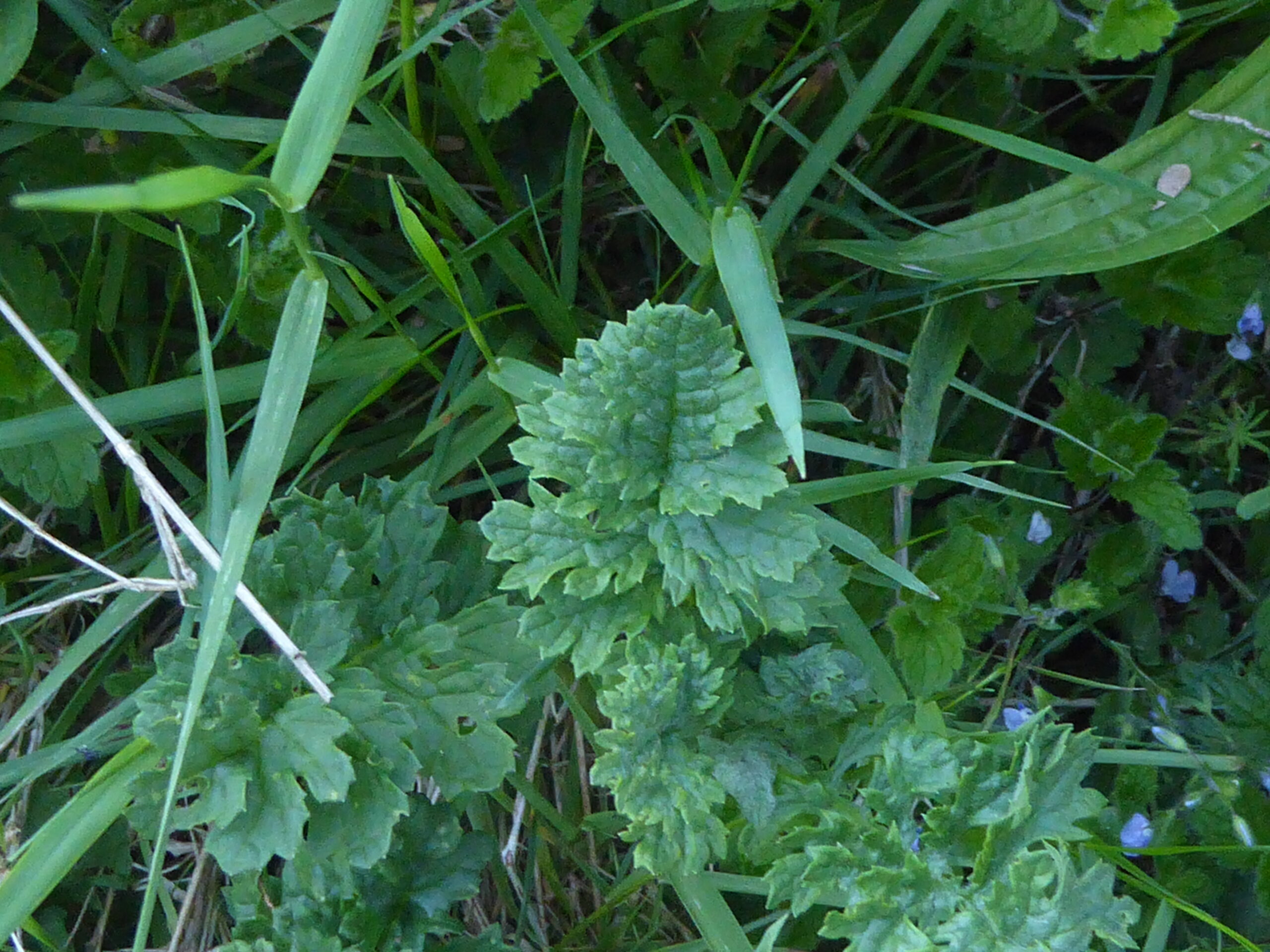
Yesterday I spotted some frilly kale-looking leaves coming up in the fernery. They look like ragwort. Ragwort is also known as Tansy Ragwort and can be confused with it but has more ragged leaves. It is a toxic weed, and some people can have an allergic skin reaction from touching it. Fortunately it is reputed to have an off-putting flavour, but it is often treated as a weed and eradicated. However, its nectar is an important food source for pollinators.
Ragwort is another biennial, which is why I didn’t spot it last summer. In the first year the leaves grow in a low rosette. The flowers appear later in the summer of the second year. They are a favourite with the iconic cinnabar moth caterpillars, which are striped black and yellow. The flowers look like clusters of yellow daisies on ragged-leafy stalks. After flowering the plant dies.
Ragwort is a common wildflower and can be found on roadsides and open spaces and meadows but prefers damp conditions.
-
Wood Avens (Geum urbanum)
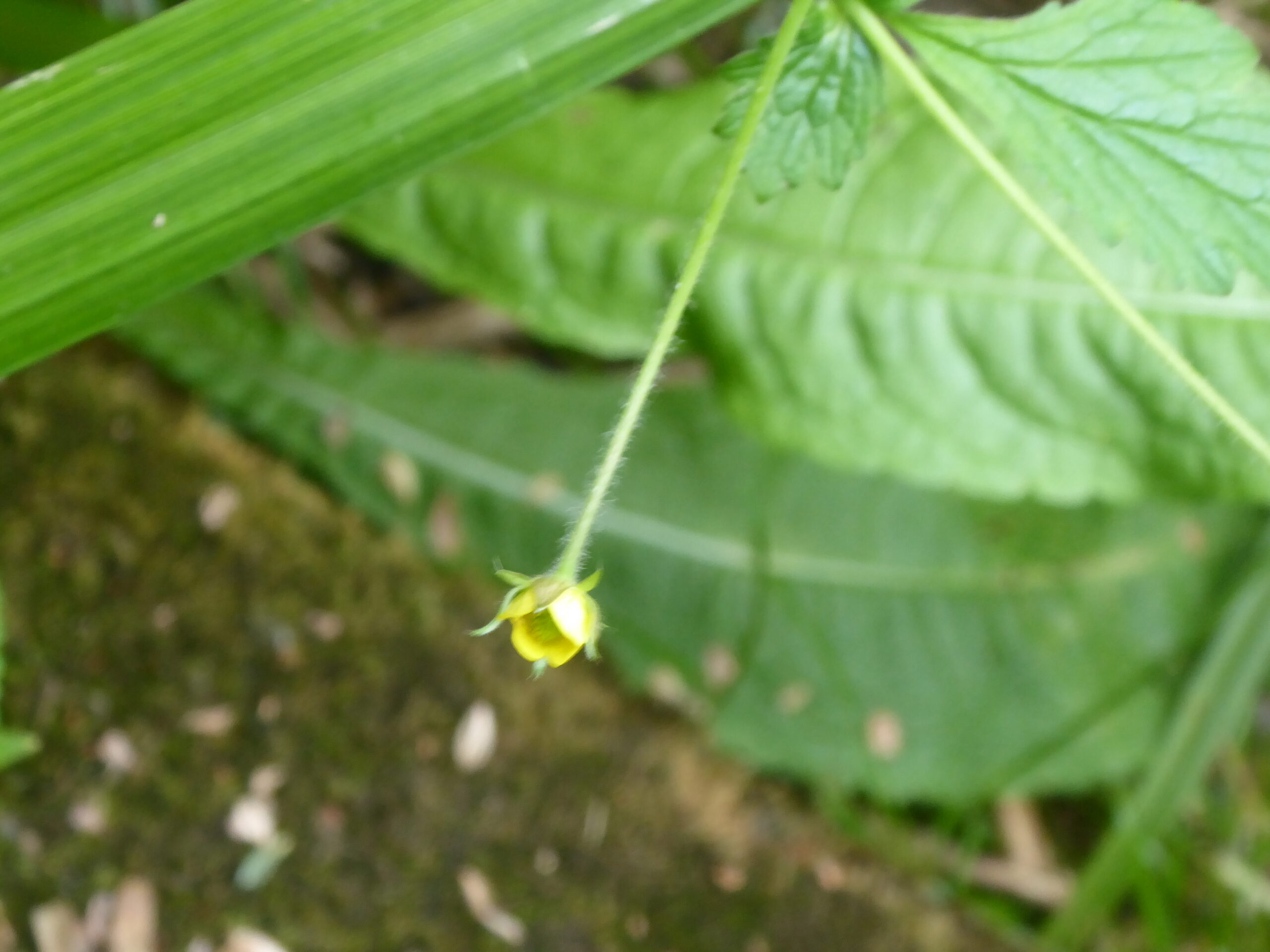
Whilst I noticed the leaves at the beginning of April, I’ve waited till this week for the flowers to bud and bloom.
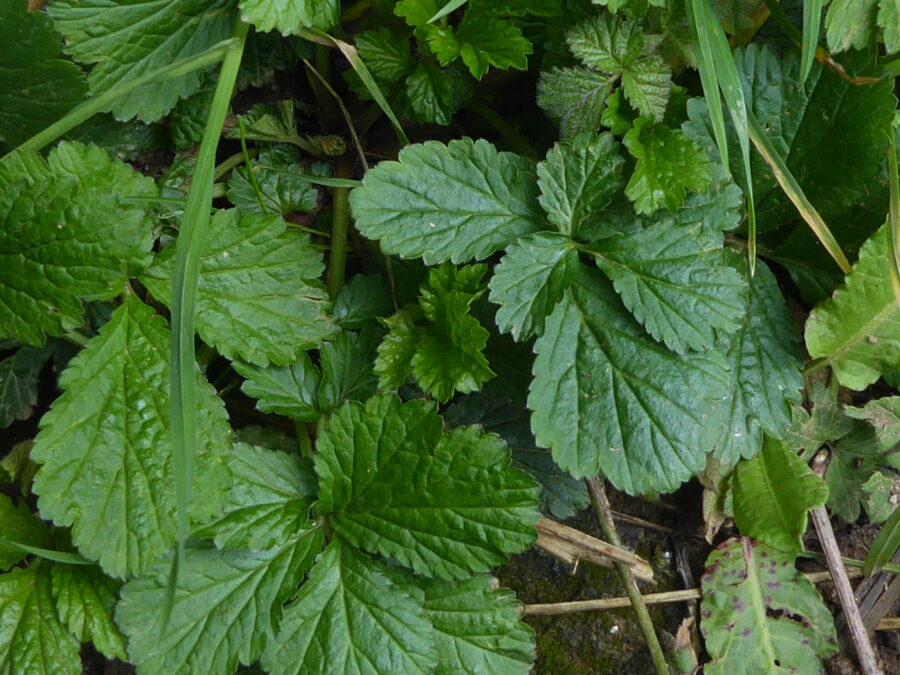
This wildflower is also known as Herb Bennet. The toothed leaves comprise three lobes and the yellow five-petalled flowers, appearing from May, look a lot like buttercups.
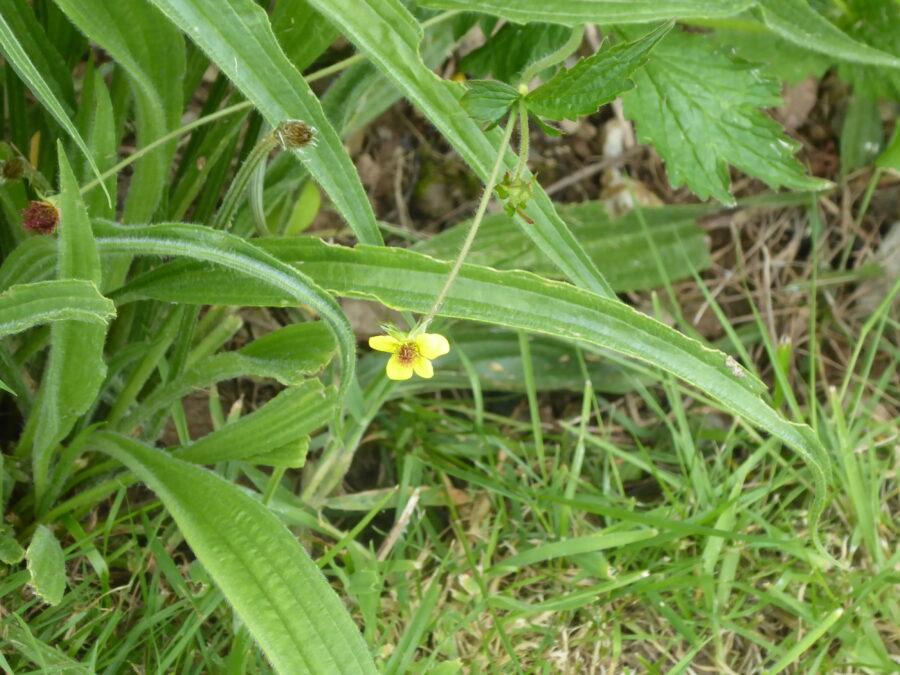
They are, however, smaller and less cup-shaped, with their petals spread out. They are also not as shiny. The stems are slenderer which means that the flowers are quick to droop. The flowers then turn into hooked seed heads, which latch onto passing animals.
-
Annual Honesty (Lunaria annua)
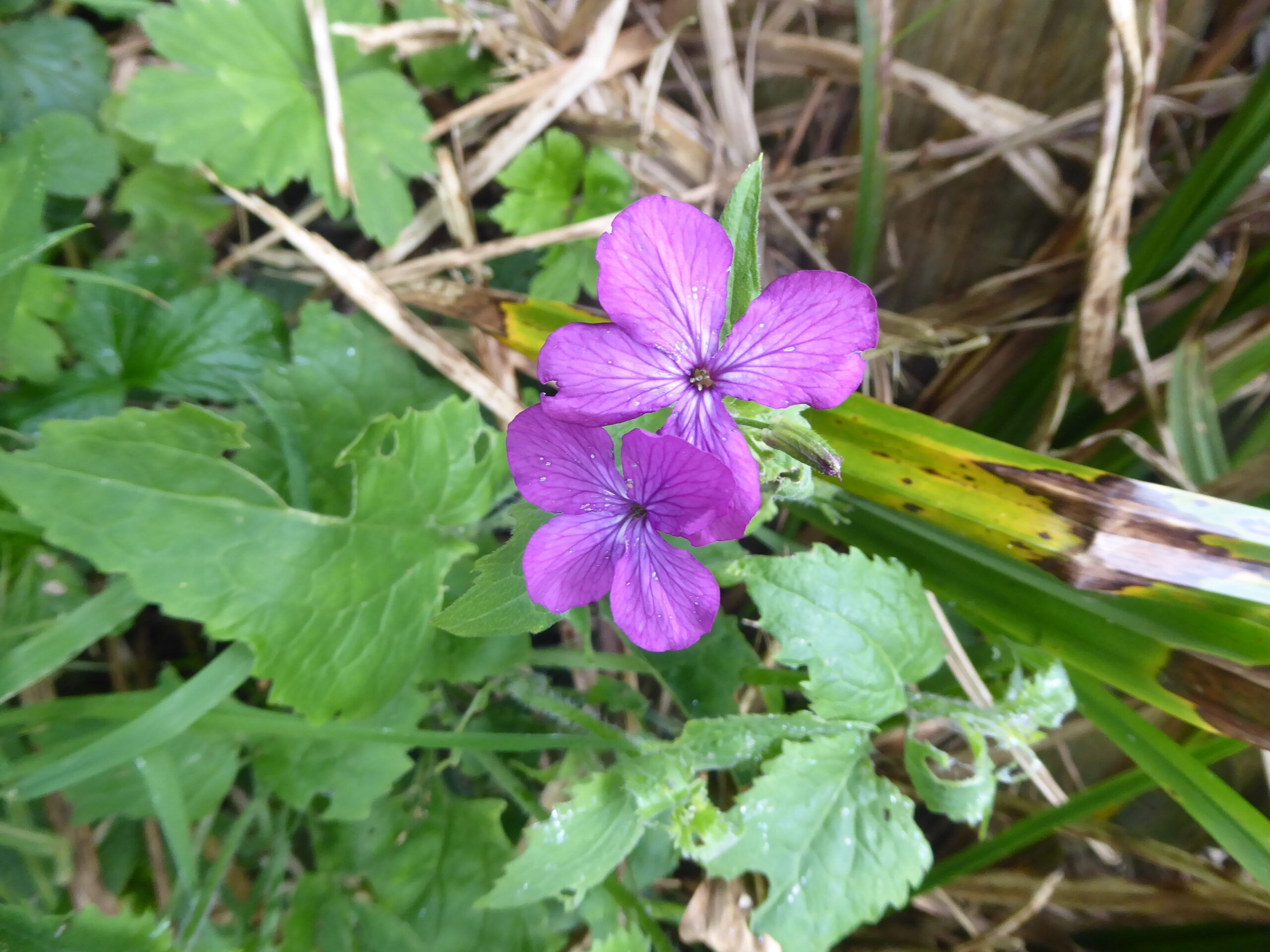
A bright purple flower caught my eye. I was drawn to its dark veins and fading colour, paler towards the centre. We’ve spotted a number of purple flowers, but I didn’t recognise this one, so I looked it up and was surprised to find out that it was honesty. When I thought about it I vaguely remembered seeing the iconic seedheads in the garden before, maybe the summer before the blog. So, although it is called annual honesty, it is biennial in flowering. It germinates in the spring, grows a low rosette of foliage in the summer and shoots up to 1.5m stems topped with flowers the following April/May. The flowers turn into green coin-shaped seedheads, which become translucent silver and are then often used in dried flower arrangements. The leaves are heart-shaped with jagged edges. These flowers were not so tall. They will grow on waste ground but prefer sun or partial shade and fertile soil.
-
Meadowsweet (Filipendula ulmaria)
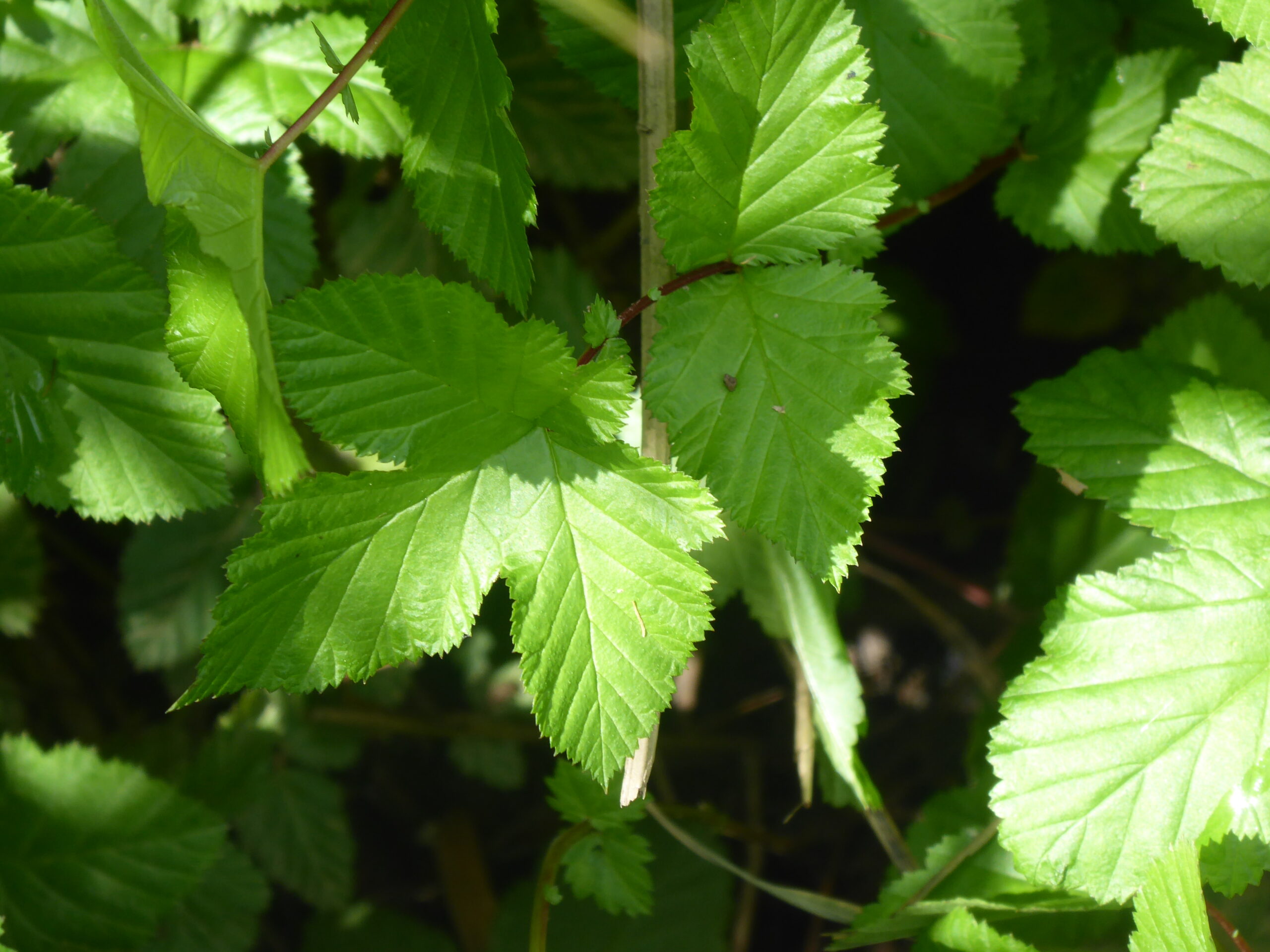
Also known as Meadsweet or Mead Wort, I have seen the frothy white flowers in previous summers, but not last summer when I started the blog. I assumed it had died, and so when I spotted the distinctive leaves, I was very pleased. They are no longer where they used to be – in Diagon Alley, but right on the boundary with next door in a flourishing clump. Meadowsweet is often found growing in clumps. It prefers a damp habitat – damp meadows,
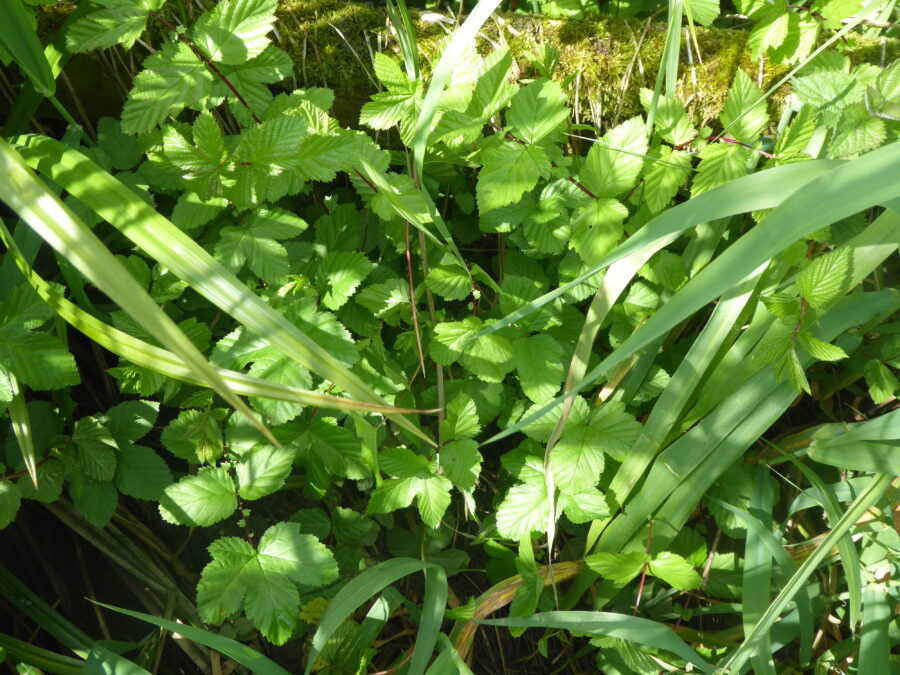
fields, and gardens. Its flowers are creamy-white frothy sprays with a sweet and medicinal scent. They come out from early summer. However, before that, meadowsweet can be identified by its red stem with small leaflets in between the regular leaves. The leaves have jagged edges and those at the end of the stem are 3-5 lobed with smaller leaflets growing behind them.
-
Japanese Honeysuckle (Lonicera japonica)
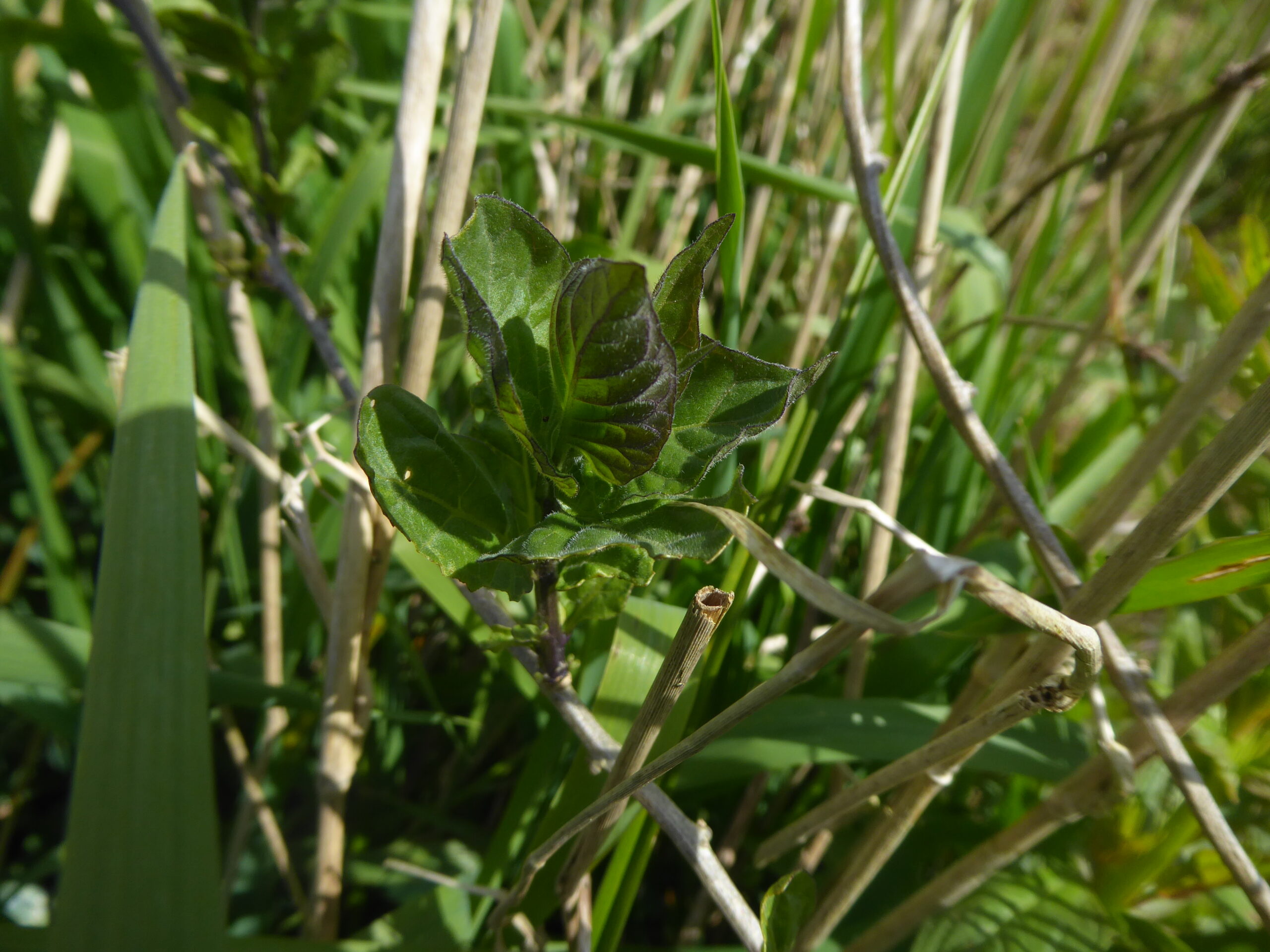
Today Mr C and I went down to the watermeadow armed with secateurs and a wheelbarrow to get in and cut down hemlock water dropwort before it flowers. We had spotted a few in the last month or so, they are growing quite tall now, and although just cutting them down won’t kill them, it will prevent them from flowering and hopefully weaken them for the rest of the summer. We also pulled up any common nettles that were near the pathways.
While we were down there, I spotted a few things. One thing I noticed was that there is quite a lot of honeysuckle weaving amongst the grass in the far-left corner of the meadow. I was surprised that I hadn’t noticed it last summer as it would have been in bloom from July, but perhaps it was too obscured in the middle of a wild patch.
I identified it as Japanese honeysuckle – another non-native but common in the southern half of Britain. We have some in the top garden that twines among other shrubs but is not the same as potted specimens that we brought with us. I was surprised to find it so close to the stream – it must have been largely submerged over the winter. However, apparently Japanese honeysuckle doesn’t like dry soil, though it prefers soil which drains well. Also, it likes a sunny spot. It is a climbing shrub, which in the absence of trees and walls will probably continue to ramble. The leaves have a soft fuzz and seem to be growing in clumps separated by a slim woody stem, or runner. The flowers will be whitish when they arrive and the berries will be red, turning black. It is semi-evergreen, which means it loses its leaves for a short while before new growth starts.
-
Wild Strawberry (Fragaria vesca)
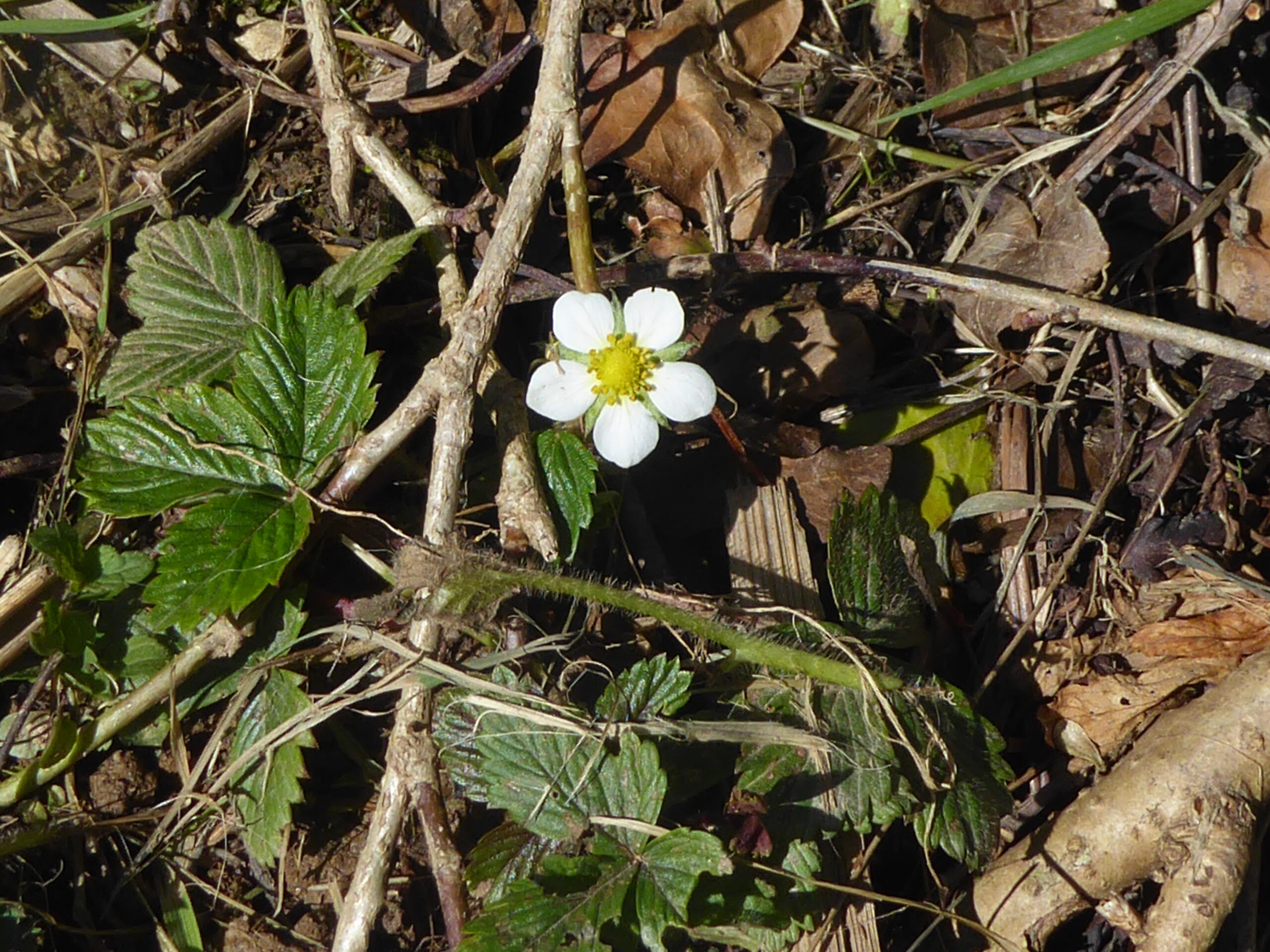
Wild strawberry or alpine strawberry? What’s the difference? The difference is that alpine strawberries don’t produce runners. We have wild strawberries in the top garden, they also like grassy banks and scrubland, but I have never seen one in the watermeadow before. This was growing at the foot of the bank under the sea buckthorns. The ground is a little raised compared to the middle of the meadow. Anyhow it survived the floods. It prefers sunny and dry locations but will tolerate partial shade. The flowers bloom from April onwards and tiny strawberries appear afterwards. It has leaves with toothed edges and five-petalled flowers with a yellow centre, which will turn into the tiny fruit. This is related to the cultivated strawberry, and they are in the rose family.
-
Red Campion (Silene dioica)
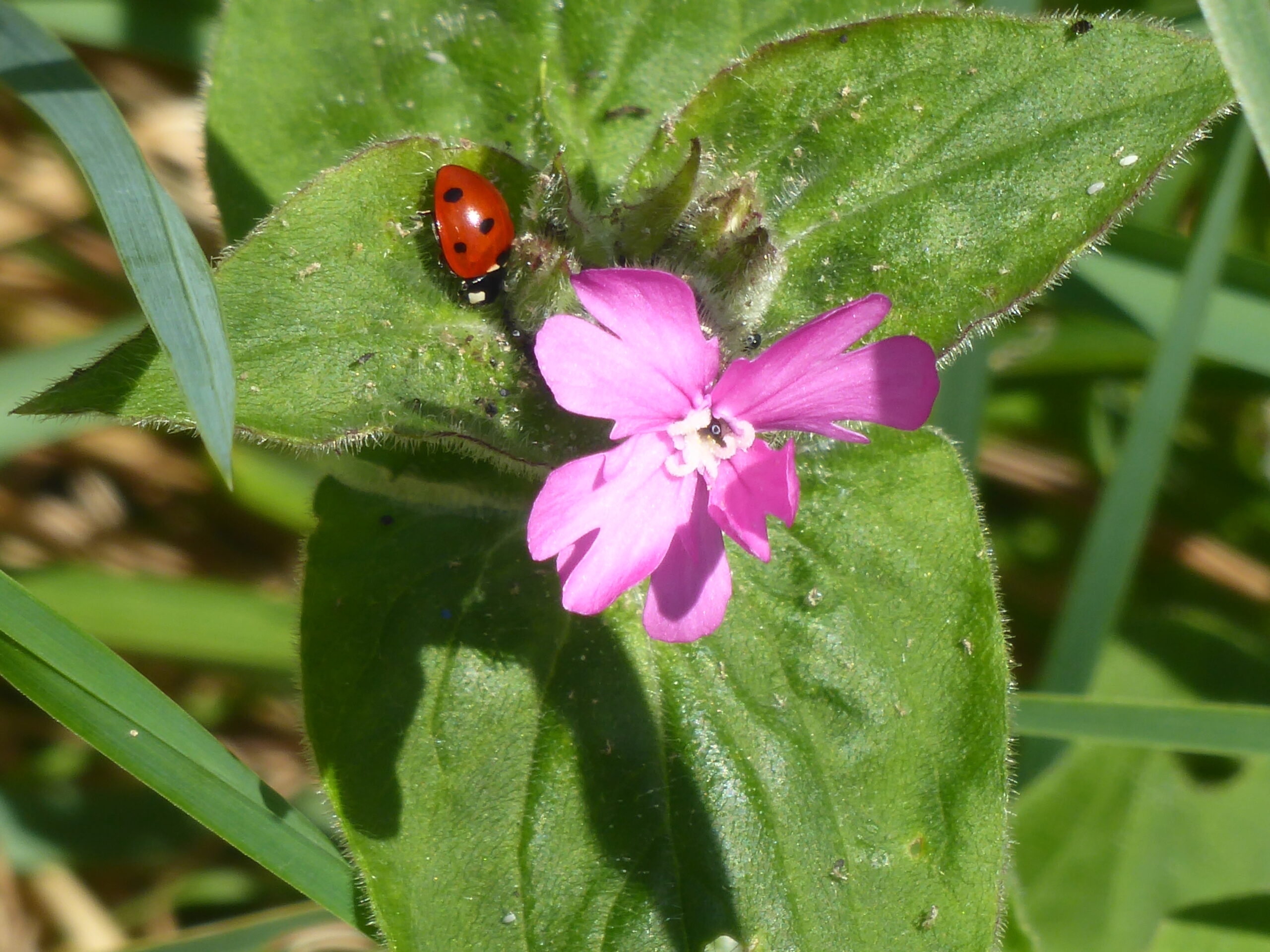
I first saw this back in June, but there was so much to log on the website that the photo got overlooked and then it was too late – the flowers had finished. Next door’s bank has had at least one red campion just about all year round, but we had to wait until yesterday to spot this one on our bank. It looks a little sorry for itself but beloved by pollinators, this one has befriended two ladybirds –
the second one is on the next tier of leaves down.
Its purple buds open into deep pink flowers with five notched petals and a white centre. It annoys me that it is known as red campion when it is clearly pink!! It likes lightly shaded places – woodland, grassland, banks, hedgerows, and verges.
There is much mythology surrounding the red campion – it is said that it guards the bees’ honey stores and that it offers a hiding place for fairies.

-
Marsh Cinquefoil (Potentilla palustris)
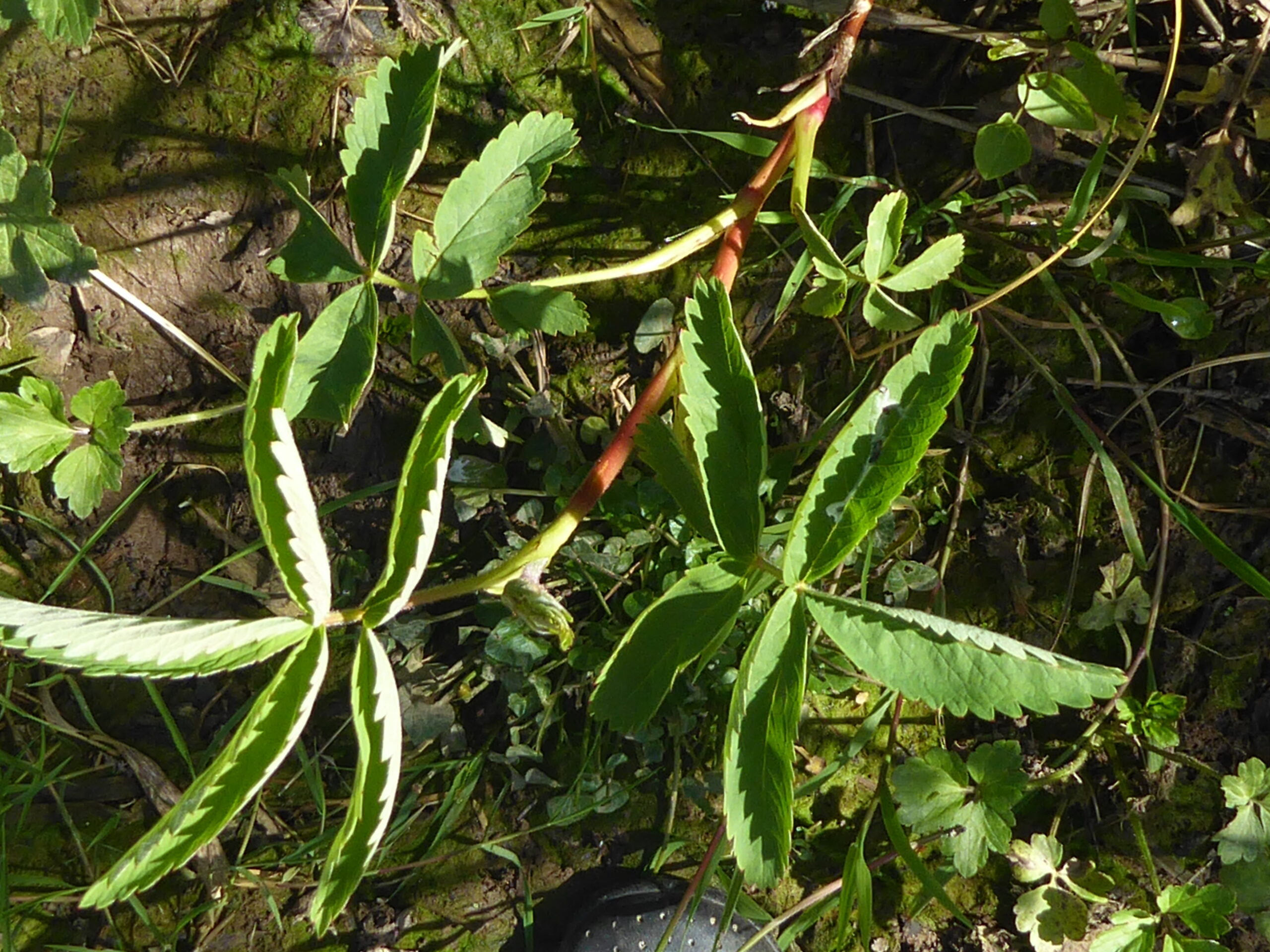
This is a Marsh Cinquefoil that we rescued from our pond when it got overwhelmed by grasses and weeds last summer. We forgot to put back in again and it has been overwintering in a bucket under the sea buckthorns and willows. It is now thriving. We have some mesh baskets and when we can access the pond without churning up the pathways, we will return it. I wanted to cross the stream this morning, but the water level is still higher than the tops of my wellies.
We’ve already seen the creeping cinquefoil sprawling across the bank and the ramp. Its marshy cousin is altogether on a larger scale with five leaves at the end of each red fleshy stem. If it flowers it will be May to July (I don’t remember seeing any last summer) with deep crimson stars. The red ‘petals’ are actually sepals. (On a daisy, these are the green bits that cup the flower.) The actual petals are much smaller, but just as red. It provides nectar to bees and hoverflies and, of course, prefers wet, marshy places.
-
Common Dog Violet (Viola riviniana)
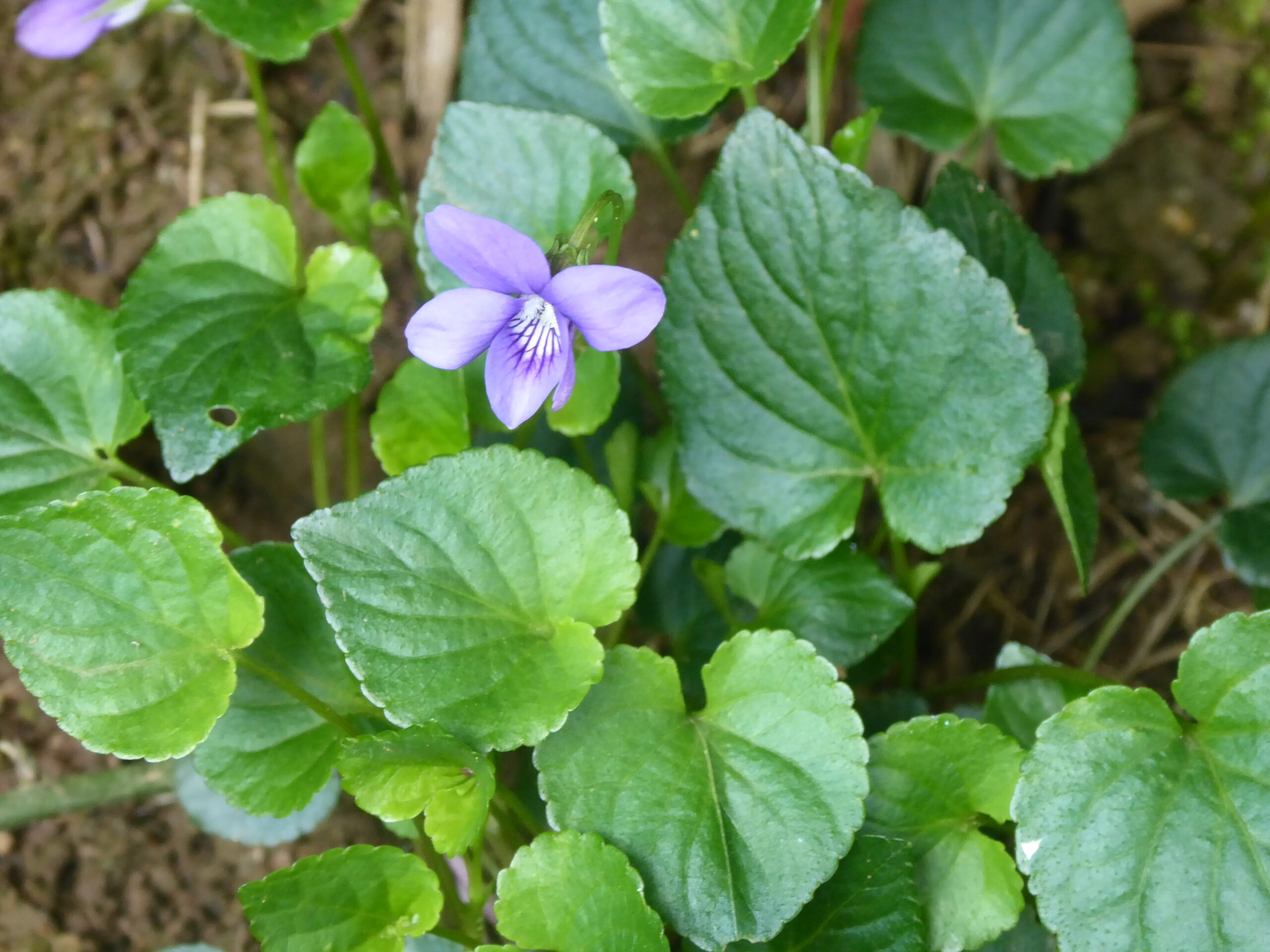
We have clumps of violets growing in our lawn and they look so pretty. When I noticed this clump growing under the decking yesterday evening, I was surprised that the leaves were larger and more luxuriant than the ones in the lawn, presumably because they have more room down here to spread out.
The common dog violet has deep green heart-shaped leaves and violet five-petalled flowers. It is almost identical to the Sweet Violet but does not have a scent. I had assumed that this was a sweet violet, but when I learned this fact, I realised that I would have to do a smell test, so this morning I scrambled up the bank under the decking and sniffed. Unfortunately, there was no whiff of scent!
